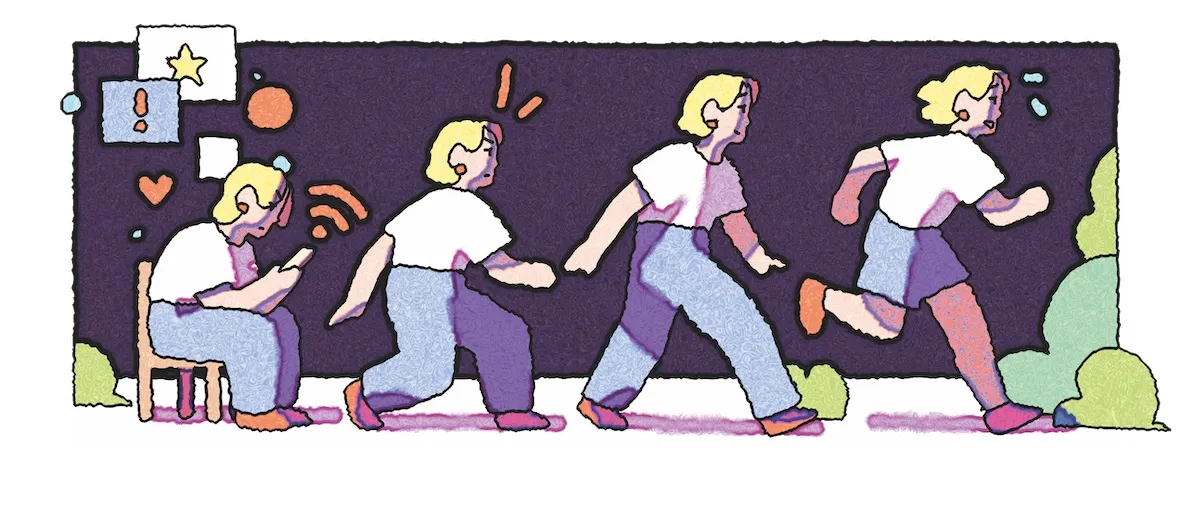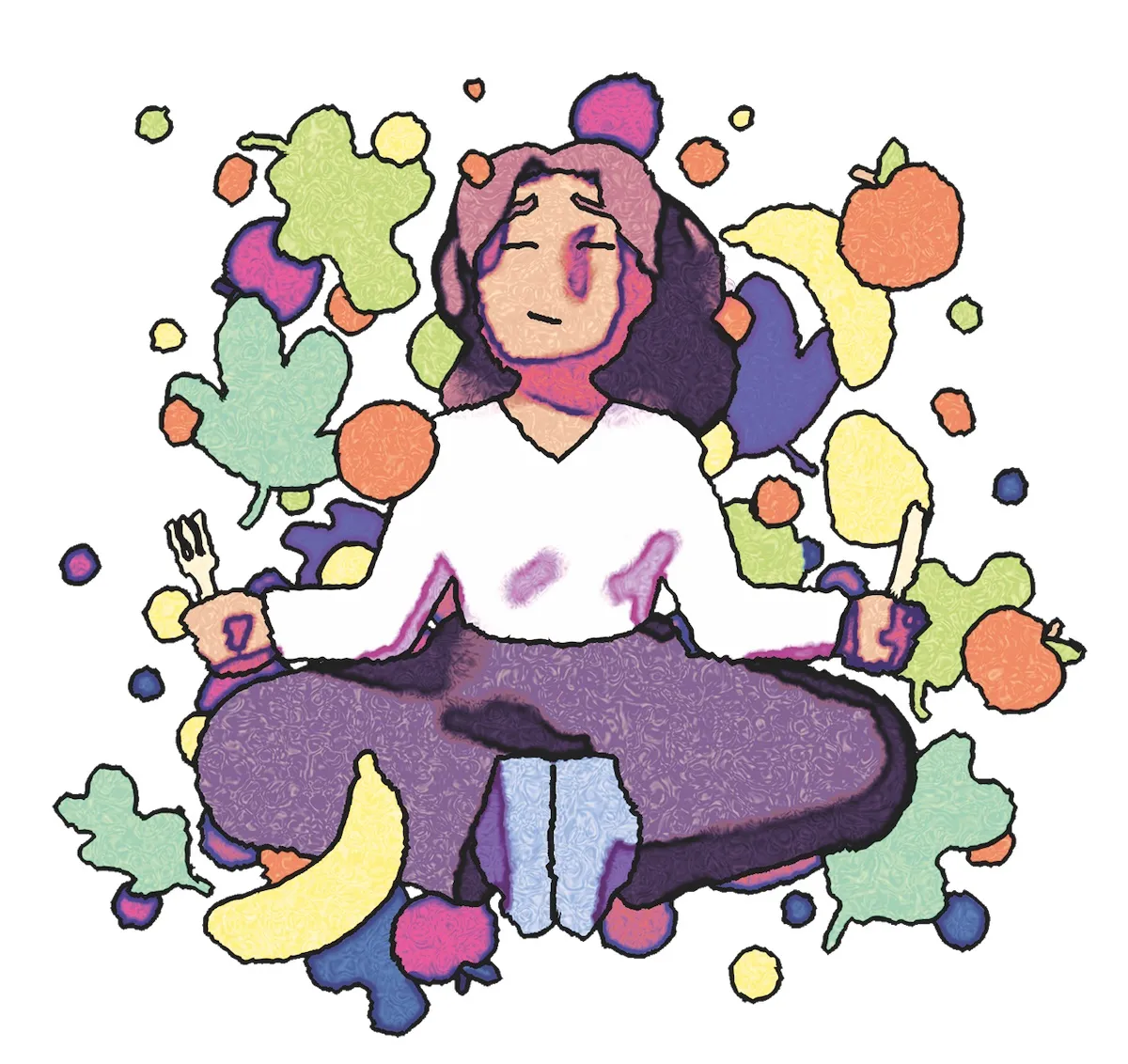The word ‘habits’ gets thrown around a lot. Your GP encourages you to get into the ‘good habit’ of eating five portions of fruit and veg a day; your friend worries about their ‘bad habit’ of checking Twitter before bed; maybe you once had a music teacher who kept on at you to practise your scales until they ‘feel habitual’.
Or perhaps you’ve been telling yourself that you want to get ‘into the habit’ of going to the gym twice a week.
All this talk makes sense at a colloquial level, but psychologists are more pedantic about it. In fact, not everything you do, or aspire to do, frequently or regularly, is necessarily a habit.
Some of the situations above are more about goals (what you hope to achieve at some point in the future), intentions (your plans for what you’re going to do) and skills (such as being able to hit musical notes consistently), than about habits per se.
Routines – such as going to the gym regularly – have the potential to become habitual, but it’s not inevitable that they will. So, what exactly is a habit? And what does it take to make one that’s ‘good’ or break one that’s ‘bad’?
What makes a habit?
In psychology, saying that a behaviour has become habitual means something very specific – although there are some niche controversies around the edges of the concept.
One key feature of habits has been recognised since at least the time of William James, the American philosopher and historian who’s regarded as one of the founders of functional psychology.
As he put it near the start of the 20th century, when it comes to habits, “action goes on of itself”. What he meant by that is once something is habitual, you do it without thinking.
Building on that idea, psychologists today say that what makes a habit a habit, is that it’s a behaviour, or a related sequence of behaviours, that’s triggered automatically by specific cues in the environment.
The pairing between the cue and the action might have begun as willful and goal-related, but over time, the association strengthens and now it plays out without thought or volition – even if the behaviour is no longer pleasurable or desirable.
For example, you take a sip from your pint at the pub and, without thinking about it (and even though you want to quit smoking), you reach for your pack of cigarettes.
This process of a behaviour in a particular situation starting out as deliberate or purposeful – that is, done to serve a particular goal or because it’s rewarding – but then becoming increasingly automatic through repetition, has been shown at the level of brain activity.
The more a behaviour becomes an ingrained habit, the more that it comes to be controlled by brain networks that are involved in involuntary action than by networks related to conscious goals and decisions. Or, to put it another way, the decision-making process you once had to go through to perform the behaviour has been bypassed.
It’s more efficient that way since the brain only has so much energy and real estate to play with to get stuff done, so if a behaviour is rewarded and sufficiently repeated, it squeezes the decision-making part of the process out of the loop.

Fortunately for us, this decision is gone, but not forgotten. Let’s say, for example, you like to have a glass of wine to relax after work. At first, when the behaviour was new, the decision-making process took up a lot of the processing power of the prefrontal cortex (the brain’s executive command centre that governs planning and conscious thought).
Clearly such an important part of the brain can’t be busying itself with decisions about wine. So as this behaviour is repeated, the decision-making seems to be ‘handed off’ to a smaller part of the prefrontal cortex, called the infralimbic (IL) cortex, where it looks like habits can be turned on and off.
Scientists from MIT investigated the function of this region by training rats to navigate a maze to reach a reward (some chocolate milk). After enough repetition the rats appeared to make their way through the maze’s turns by reflex: getting to the chocolate milk had become habitual.
The reward could be removed and the rats would keep running the maze, and even when the chocolate milk was mixed with a nausea-inducing chemical, the behaviour persisted – they ran the maze and didn’t drink the milk. The behaviour had become fully habitualised.
Then the researchers used a technique called optogenetics, which uses light to switch on and off the function of certain cells, to turn off the IL cortex – the part of the brain where we think the control of habits resides. With this part of the brain inhibited, the rats almost instantly slowed down as they started to consider each turn in the maze. They had dropped the habit.
Read more:
- These 8 simple habits will help you live longer, suggest scientists
- Dr Michael Mosley's 7 best science-backed tips to improve your health
- The 6 best habits to keep your brain fit, according to neuroscience
This work has led scientists to think that the IL cortex might be a kind of switchboard for our habits, turning them on and off as needed. While we can’t start shining lights into our skulls, it does add flesh to the bones of the idea that habits bypass decision-making and that it might be possible to tease repetitive behaviours out of our heads with a bit of conscious thought.
But what really makes habits so interesting to psychologists and other health professionals is the way they can shape our behaviour… for better and worse. The healthy or unhealthy habits you may have can exert an outsized influence on the kind of lifestyle you lead, and on your ability to fulfil your longer-term goals.
So, if you’ve formed a number of unhealthy habits, the cumulative harmful impact could be significant. Hence the appeal in learning how to break them, or to build healthy ones.
How to break bad habits
Knowing the basic psychology of what makes a habit a habit can provide clues for how to break bad ones and create good ones. To break a bad habit, a good place to start is to think about the specific cues that trigger the habit and then see if you can avoid them or make them less noticeable.
For instance, it sounds obvious, but if you want to break the habit of checking social media when you get into bed, the main trigger is probably the sight of your smartphone. So to break the habit, remove the trigger (leave your phone downstairs).
Similarly, if you want to break the habit of pouring yourself a glass of wine after work, consider the trigger – is it the sight of the wine bottle in the fridge, the wine glass on the shelf or something else? Hide these triggers and you’ll find it easier to break the habit.
Besides the specific triggers, habits also tend to be embedded in a wider context or routine, so you can make it easier to break a habit by altering them.
Read more:
- Why am I such a creature of habit?
- Be more productive: A neuroscientist explains how to get more done in less time
- Dr Michael Mosley: The 10 most powerful daily habits for boosting your health and happiness
How far you go is up to you, but at the extreme would be things like moving house or changing job – anything that shakes up the associations in your brain between specific situational cues and past behaviours. (This is why you might find that the habits you have at home lose their power when you go on holiday, because the background cues and context are often profoundly different.)
Another trick is to think about the original function of the now unwanted habitual behaviour. It’s likely that there was originally a purpose to it, or it provided some kind of pleasure or reward. But perhaps now your goals have changed, or the pleasure provided is reduced, or you no longer think that the reward justifies the behaviour.
For instance, the after-work glass of wine might have helped you relax or served as a reward after a hard day. If so, consider what other forms of relaxation or reward you could give yourself instead.
The point is, breaking a bad habit will always be easier if you substitute the unwanted behaviour with a new (more desirable) behaviour that serves a similar function, than
if you just leave a gap or hole where the old habit used to be.
How to form new healthy new habits
When it comes to making desirable behaviours automatic, you can reverse engineer the psychology behind habit formation. Remember it starts with a behaviour or sequence of behaviours performed repeatedly in response to the same cue(s) or trigger(s).
When that pairing is repeated often enough, it can eventually become automatic. So to begin inculcating a new behaviour, take every opportunity you can to repeat it at the same time and place, in the presence of the same trigger(s), so that you start that pairing process in your brain.

For instance, if you want to make a habit of eating an apple a day, it’s more likely to stick if you do it at the same time and place – such as having it for your mid-morning snack. It’s also going to help to have a bowl of juicy looking apples in sight wherever you happen to be mid-morning, such as by the kettle. Seeing the tasty-looking apples will act as a trigger, so place the fruit bowl by the kettle.
Also, remove any friction between the trigger(s) and desired behaviour. Say you want to make a habit out of going to the gym on your way home from work every Thursday. Think of all the things you could do to ease that pairing, such as choosing a gym that’s on the shortest route home, always having gym clothes ready in your work bag, and so on.
Yet another simple trick is to reward yourself in some way for performing the behaviour you want to become habitual. This will help to reinforce the behaviour during the early days before it becomes automatic.
For example, let’s suppose you want to make a habit out of going for a run at 7am every Monday morning. In the early weeks, you could consistently reward yourself afterwards with a luxurious bubble bath (you’ve got time because you’re working from home that day). Once the run becomes habitual, you’ll be able to do without the bath, but the bath will help you repeat the 7am run enough times for it to become a habit.
At this point, you might be wondering how many times is ‘enough’. Good question. There isn’t a lot of firm evidence on this, partly because there isn’t an easy scientific way to say exactly when a habit has been formed.
In fact, I’ve been referring to habits as if they’re a singular, all-or-nothing thing, but of course they can vary in their strength, some being more deeply ingrained than others.
That said, a much-cited study from 2010, which involved volunteers keeping habit diaries, found that the time taken for a newly performed behaviour (such as eating fruit with lunch) to reach ‘peak automaticity’ was 66 days, on average. Another study with gym members found that it took at least six weeks, with four gym visits per week, to form a new exercise habit.
In other words, if you want to start performing a new desirable or healthy behaviour, and for it to become genuinely habitual, it’s definitely going to take a degree of consistency, dedication and commitment.
Read more:
